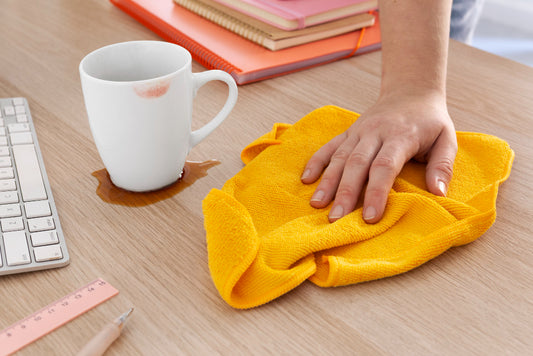Maintaining a clean and sanitary home involves mastering the art of mopping. From choosing the right mop to employing effective techniques, this guide explores the Top 10 tips to ensure your mopping routine is not only efficient but also tailored to your specific needs. Additionally, we'll delve into the age-old debate of Microfiber vs. Traditional Mops, helping you decide which is the perfect fit for your cleaning arsenal.
Tip 1: Sweep or Vacuum First
Before reaching for your mop, start by sweeping or vacuuming the floor. This removes loose dirt and debris, preventing them from being spread around during the mopping process. A clean sweep sets the stage for a more effective mop.
Tip 2: Choose the Right Cleaning Solution
Selecting the appropriate cleaning solution is crucial for effective mopping. Different floors require different solutions, so be sure to choose one that is compatible with your flooring type. Whether it's a mild detergent for hardwood or a specialized cleaner for tiles, the right solution enhances cleaning efficiency.
Tip 3: Pre-Treat Stains and Spills
For stubborn stains or spills, pre-treat the area before mopping. This can involve letting a cleaning solution sit on the stain for a few minutes to loosen it before tackling it with the mop.
Tip 4: Follow the Floor's Grain
When mopping hardwood or laminate floors, it's essential to follow the direction of the wood grain. This not only enhances the cleaning process but also maintains the integrity and appearance of the flooring.
Tip 5: Use the Figure-8 Technique
Employ the figure-8 technique when mopping. This involves moving the mop in a figure-8 pattern, which covers a larger area and ensures a more thorough clean. It's particularly effective for open spaces and large rooms.
Tip 6: Don't Forget the Corners
Often overlooked, corners and edges accumulate dirt and grime. Pay special attention to these areas, using the mop to reach into corners and along baseboards. This ensures a comprehensive clean from wall to wall.
Tip 7: Wring Out the Mop Properly
Whether you're using a traditional string mop or a modern microfiber mop, proper wringing is key. Overly wet mops can damage certain flooring types and be less effective in picking up dirt. Ensure your mop is adequately wrung out for optimal results.
Tip 8: Regularly Clean or Replace Mop Heads
Dirty mop heads can spread bacteria and grime rather than cleaning it. Regularly clean or replace mop heads, especially if you notice a decline in cleaning efficiency. This ensures a hygienic and effective mopping experience.
Tip 9: Use Microfiber for Versatility
Now, let's delve into the Microfiber vs. Traditional Mops debate. Microfiber mops are renowned for their superior cleaning abilities. They effectively capture dirt, bacteria, and allergens, making them ideal for households with allergies. Additionally, microfiber is versatile and can be used on various floor types.
Tip 10: Consider Traditional Mops for Certain Situations
While microfiber mops are highly effective, traditional mops still have their place. They are often more budget-friendly, and for some users, the feel of a traditional mop provides a sense of familiarity and control. Consider traditional mops, especially if you have a specific preference or are looking for a cost-effective solution.
Mastering effective mopping techniques involves a combination of proper tools, techniques, and the right choice between Microfiber and Traditional Mops. By incorporating these Top 10 tips into your cleaning routine, you can elevate the cleanliness of your home while ensuring your floors remain in pristine condition. Whether you opt for the modern efficiency of microfiber or the timeless simplicity of traditional mops, the key is to find a method that aligns with your lifestyle and preferences. Happy mopping!




